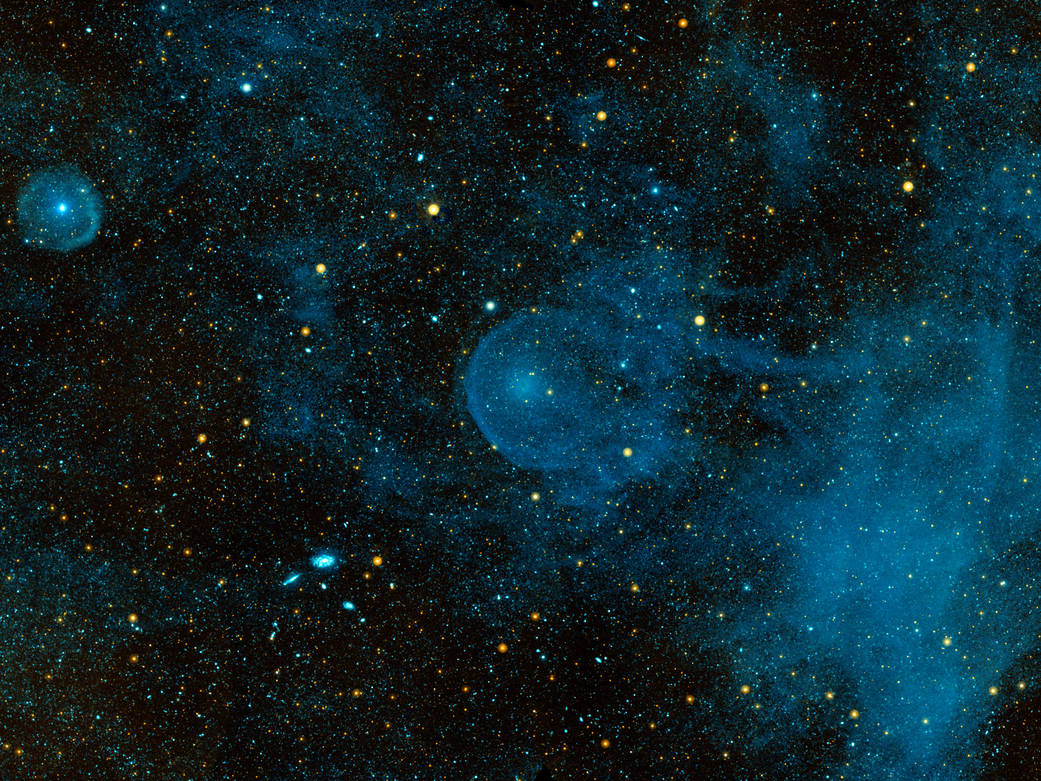
A runaway star, plowing through the depths of space and piling up interstellar material before it, can be seen in this ultraviolet image from NASA’s Galaxy Evolution Explorer. The star, called CW Leo, is hurtling through space at about 204,000 miles per hour (91 kilometers per second), or roughly 265 times the speed of sound on Earth. It is shedding its own atmosphere to form a sooty shell of discarded material. This shell can be seen in the center of this image as a bright circular blob.
CW Leo is moving from right to left in this image. It is travelling so quickly through the surrounding material that it has formed a semi-circular bow shock in front of itself, like a boat moving through water. This bow shock is made of superheated gas, which flows around the star and is left behind in its turbulent wake. This blown-out bubble is 2.7 light-years across, which is more than half the distance from our sun to the nearest star, or 2,100 times the size of Pluto’s orbit.
The size of the bubble (called the “astrosheath”) has allowed astronomers to estimate that CW Leo has been shedding its atmosphere for about 70,000 years. This is part of the star’s natural life cycle as it runs out of hydrogen fuel and gradually throws off its outer layers to expose its bare, dying core. This core is called a white dwarf, and is the end product of all low-mass stars like our sun.
CW Leo is the second runaway star to be observed with the Galaxy Evolution Explorer. The first, Mira, was observed by the telescope back in 2006.
This image is the combination of near-ultraviolet data, shown in yellow, and far-ultraviolet data, shown in blue.
Image credit: NASA/JPL-Caltech

























